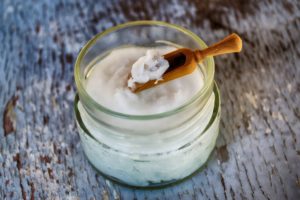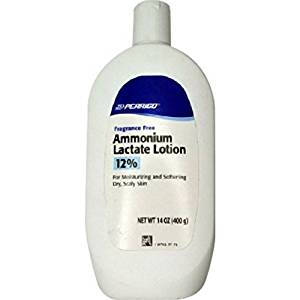With an estimated 40% of the global population suffering from keratosis pilaris, many patients seeking treatments for their KP often complain about seeing keratosis pilaris outbreaks on their chest or breasts.
The reason that these patients are often much more aggravated with their KP and that their complaints are often times verbalized with a lot more urgency then the average person who has KP on their upper arms is because many KP outbreaks on the chest tend to lead to larger and much more pronounced “bumps”, more frequent discoloration of the skin as well as larger “splotchy” areas of red skin.

Another reason for their increased sense of urgency is that keratosis pilaris on the chest can sometimes be accompanied by pain or irritation, more so then KP on the other more common locations like the legs, face or back.
Among all of the many areas of the body that keratosis pilaris can show up, there are far more reported cases of severe or extreme KP on the chest, back and the legs, respectively. The reason for this is still unknown to this day. While there are a lot of different theories and speculations as to why this is (from many doctors and other health care professionals), there is still no definitive proof to back these theories up.
The truth is, if you find a line of treatment that seems to help to improve your keratosis pilaris in general, there is a far greater chance that this treatment will clear up KP on the problem areas of the body (even if they are symptoms of severe or extreme keratosis pilaris).
Determine Which Keratosis Condition You Have
Unsightly red blotchy bumps on the chest are a drag. If you want to get rid of them, first you need to know exactly what it is that you’re dealing with…
There are three main types of keratosis on the chest. They are:
Keratosis Pilaris
Actinic Keratosis
Seborrheic Keratosis
Treating Keratosis Pilaris on the Chest Naturally

With any type of keratosis pilaris, remember that coconut oil (Amazon link) is your friend. Not only is it anti-inflammatory, it’s anti-bacterial too! It will help to keep the affected area bacteria free and also soothe and help to reduce swelling. Normally, people tend to see improvement in the affected area in under a week.
Here’s a no nonsense routine that has lead to great results in lots of people:
Start by exfoliating the affected area thoroughly with an exfoliating soap, scrub or a loofah sponge. Remember to be gentle, your skin is already a bit irritated so don’t make it worse.
Shower and wash your skin thoroughly. If possible, use a mild, gentle soap. Then apply some natural and organic Apple Cider Vinegar ( My favorite brand – Amazon Link). Let it sit on the skin for a few minutes (keep it out of the running water). Finally, rinse of the ACV using water alone (no soap).
Pat the affected area dry gently. Gently apply a little (a dime sized ball) of Coconut Oil, being sure to lightly massage it into your skin.
Use this routine about one or two times a week for upwards of two months. If you’re not seeing any improvement at all in two weeks, discontinue using the above steps. Plus, keep in mind that both coconut oil and aloe vera are great moisturizers that you can use at all times, but especially on areas affected with KP.
You most likely need to tackle keratosis pilaris from the inside as well as the outside, so be sure to check out our Keratosis Pilaris Diet Plan (just scroll down to the bottom of the page).

Actinic Keratosis VS. Seborrheic Keratosis
Actinic keratosis (solar keratosis) and Seborrheic keratosis are to very different conditions. For some reason, many websites seem to mention them together casually not realizing how vastly different they really are.
Here’s a quick breakdown of the two:
Actinic Keratosis
Actinic keratosis (sometimes referred to as solar keratosis) is a skin condition that’s caused by over exposure to the sun. We’re not just talking about being in the sun too long or having forgotten to use sunscreen a couple of times – we’re talking about years of direct sun exposure. Hence the nickname “solar keratosis”.
It’s more common than most people think, with estimates of over three million cases per year. It’s much more common in older adults and common locations for it are on the face (especially the nose and lips), ears, scalp and neck. It can also show up on the forearms and the back of the hands.
Identifying Actinic Keratosis:
Look for small crusty or scaling bumps, which often times also have cracks and discoloration. They normally feel rough and dry, many people think that they’re actually easier to feel than they are to see.
Actinic keratosis can become cancerous, if you think that you have it – see a doctor immediately. If you do have actinic keratosis, always use the highest SPF sunscreen you can find. Even if it’s currently fine, always keep and eye on it, if it changes at all see a doctor and have it checked out again as soon as possible.
Actinic keratosis is much more common on fair skinned people, and it may even regress – That is, clear up on it’s own.
Seborrheic Keratosis
Seborrheic keratosis is a condition of slightly raised (some times flat on the top) bumps that may or may not be discolored. Seb K is quite common, and typically occurs in the 30’s and 40’s. It’s often called middle age keratosis. Another clever nickname for it is senile wart. No really, some people really call it that.
Seborrheic keratosis is treatable, it in many cases resolves (goes away) on it’s own within two years. Common locations are on the face, chest, shoulders and on the back. Seborrheic keratosis can be anywhere on the body, except for the palms of the hands and the soles of the feet. The bumps are slightly elevated, and if they are discolored, they’re typically tan or brown, and sometimes even white.
Seborrheic keratosis is not caused by the sun, and it’s not contagious. There may be one bump, but there can be a few. Specialists can remove them without any scars.
I personally had a seborrheic keratosis bump, and my doctor said that if I wanted t have it removed, I should wait to see if any more come up – as they charge the same fee (about $100) to remove them whether there was only one or several bumps.
So if you’re considering having one removed, you may want to wait. Contact your doctor and see if the same situation applies to you or not.
Seborrheic Keratosis: ACV a Natural Treatment

If you’re looking for a natural treatment for seborrheic keratosis that you can use from home, you can try the following. Firstly, make sure it’s indeed Seb K that you have, and not the other two keratosis types listed on this page!
Apple Cider Vinegar
Some people call ACV one of the best products for keratosis pilaris. It’s important that you only use all natural, organic apple cider vinegar (My favorite brand – Amazon Link). Always shake the bottle well before you use it. You’ll see a brown murky substance at the bottom of the bottle before you shake it (this is the good, powerful stuff). You want to get that well mixed into the rest of the ACV before each time you use it.
Using a cotton swab, apply a little bit on the affected area at least three times a day (five times a day is better). You can be a bit generous. Then, wait for it to dry into the skin.
If you’re thinking of using this treatment on a very visible area (like the head or the face), you may want to wait until you have a vacation from your daily activities for a while. The apple cider vinegar sometimes irritates the bumps, and they make get worse before they get better.
It is recommended if using this method to use it daily for one to two months before you start to see results. Yeah, it may take a while. But, there are lots of people online raving about how well this method works for clearing up Seb K.
And while you’re at it, apple cider vinegar may also help fight it from the inside out, there’s a lot of growing evidence for the medicinal benefits of ACV. Just shake the bottle well, mix 2 tablespoons of high quality ACV with six to eight ounces of water. Take this between ten and thirty minutes before each meal.
A quality fish oil supplement (Amazon Link) taken daily has also been shown to help reverse the bumps caused by seborrheic keratosis. Try it for a couple of months and see for yourself.
Keratosis Pilaris and Ammonium Lactate
There are a few people these days that swear by ammonium lactate based moisturizers to get rid of keratosis pilaris. There have yet to be any completed studies to show any real proof to back up any of these claims though. So technically, the jury’s still out on whether or not ammonium lactate helps to clear up KP.

So, What Exactly is Ammonium Lactate Anyway?
Ammonium lactate is both ammonium hydroxide and lactic acid mixed together. The main medically endorsed use of ammonium lactate is as a moisturizer, be it prescription or over the counter. It’s mainly used to heal skin that’s itchy, irritated and dry.
Ammonium Hydroxide
Ammonium hydroxide is a combination of water and ammonia mixed together. It’s a clear liquid substance with a strong smell. It’s naturally found in water, air and people and plants too. It’s produced in our bodies and helps with protein synthesis. It’s made by diluting ammonia with water.
Lactic Acid
Lactic acid is a naturally occurring substance in the body, mostly discussed for it’s burning sensation, as it’s the burn you feel after working out your muscles. Lactic acid is responsible for both muscle fatigue and soreness.
Some people list ammonium lactate among the best products for keratosis pilaris. Again, there’s no concrete proof that it works, but at least it’s fairly inexpensive and easy to order. If you really want to get rid of your keratosis pilaris, it might be worth giving it a try.
Our pick for the best brand of ammonium lactate is this one (Amazon Link).
